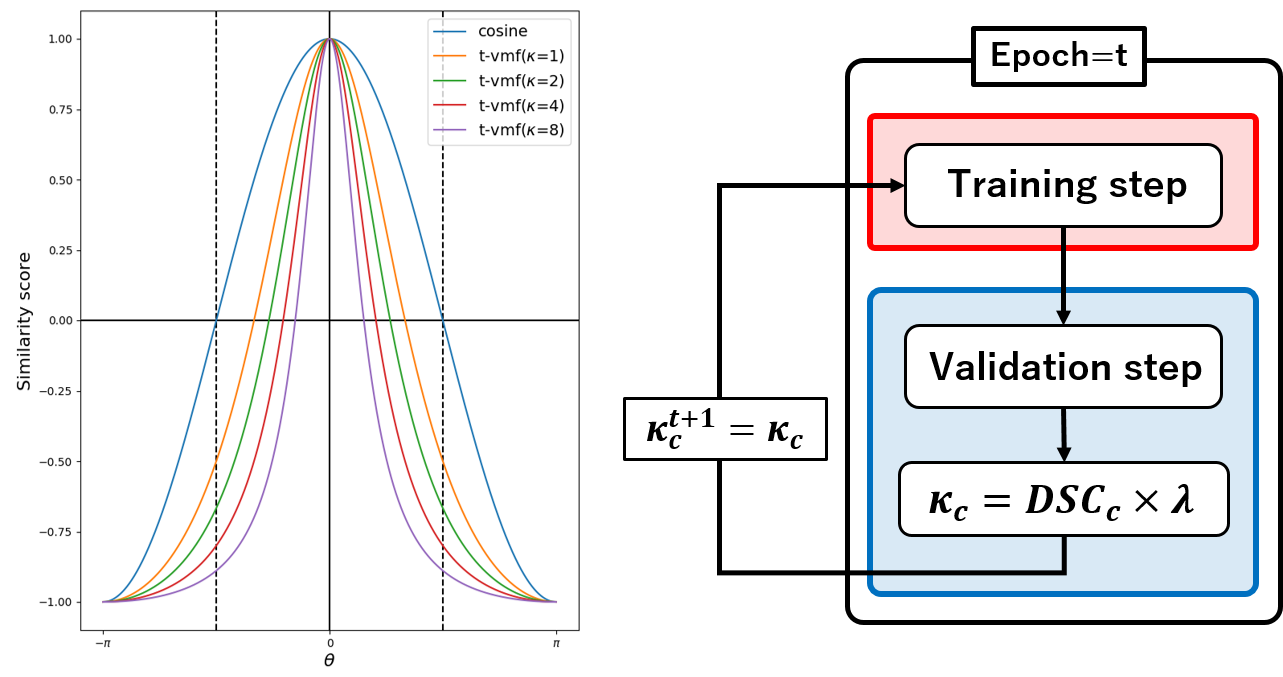Adaptive t-vMF Dice Loss for Multi-class Medical Image Segmentation
Dice loss is widely used for medical image segmentation, and many improvement loss functions based on such loss have been proposed. However, further Dice loss improvements are still possible. In this study, we reconsidered the use of Dice loss and discovered that Dice loss can be rewritten in the loss function using the cosine similarity through a simple equation transformation. Using this knowledge, we present a novel t-vMF Dice loss based on the t-vMF similarity instead of the cosine similarity. Based on the t-vMF similarity, our proposed Dice loss is formulated in a more compact similarity loss function than the original Dice loss. Furthermore, we present an effective algorithm that automatically determines the parameter $\kappa$ for the t-vMF similarity using a validation accuracy, called Adaptive t-vMf Dice loss. Using this algorithm, it is possible to apply more compact similarities for easy classes and wider similarities for difficult classes, and we are able to achieve an adaptive training based on the accuracy of the class. Through experiments conducted on four datasets using a five-fold cross validation, we confirmed that the Dice score coefficient (DSC) was further improved in comparison with the original Dice loss and other loss functions.
PDF Abstract








 Kvasir-SEG
Kvasir-SEG
 Kvasir
Kvasir
 ACDC
ACDC
 CVC-ClinicDB
CVC-ClinicDB
 MICCAI 2015 Multi-Atlas Abdomen Labeling Challenge
MICCAI 2015 Multi-Atlas Abdomen Labeling Challenge
